Museum Fires and Losses – Canadian Conservation Institute (CCI) Notes 2/7
(PDF Version, 1.16 MB)
CCI Note 2/7 is part of CCI Notes Series 2 (Preventive Conservation)
Introduction
Of all the detrimental agents affecting museumsFootnote 1 today, fire causes the most damage in the least amount of time. Flames, heat, soot, smoke, and hot gases have a tremendous effect on nearly all collections. An average of 30 fires occurs in museums each year in Canada; some destroy entire collections, others cause irreparable damage, and most could be controlled or prevented. The facts about these fires and collection losses are not well known by the museum community as they are rarely made public, other than in local newspapers. Museum staff have a tendency to keep such tragic events to themselves for a number of reasons: some are too embarrassed, others fear they will lose community trust, and some are simply too preoccupied in dealing with the disaster. Most are unaware of the importance of these data. This is unfortunate because we can all learn from these events.
This Note describes a few examples of recent Canadian museum fires. It provides pertinent information to understand better their causes and consequences. More importantly, this Note uncovers some of the reasons why many museums are still not adequately protected from this unforgiving hazard.
Fire Descriptions
A general overview is all that is required to illustrate how quickly and seriously fire can damage collections. The following cases reveal common factors found in museum fires, and describe how and when they occur.
Case 1
In the early hours of , fire completely destroyed the Taras H. Shevchenko Museum (Figure 1) located in a 64 752-m2 (16-acre) park in Oakville, Ontario. Smoke was detected by a passing motorist at about 1 a.m. Fire spread quickly throughout the museum via combustible interior finishes. The local fire department, located less than a kilometre away, responded within minutes following the motorist's call. The cause of the fire was arson according to the Halton Regional Police. Neither an automatic fire detection system nor an automatic sprinkler system was in place.
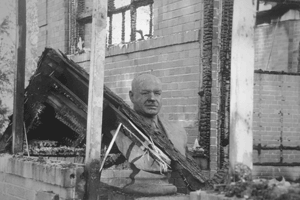
Case 2
In the late afternoon of , a smoldering fire caused millions of dollars in soot damage at the Royal Saskatchewan Museum in Regina, Saskatchewan (Figure 2). The fire originated in a reproduction of a rock-face wall that contractors had been working on until late afternoon. A chemical reaction was suspected as the cause of ignition. Heavy black soot from the fire spread throughout the museum before the fire department arrived. Automatic smoke detection was delayed because detectors had earlier been covered with plastic bags in an effort to prevent the false alarms that often occur during construction activities. The museum was closed for several months following the fire, and thousands of hours were spent removing soot from the collections. An automatic sprinkler system was not in place at the time. A system was installed afterwards.
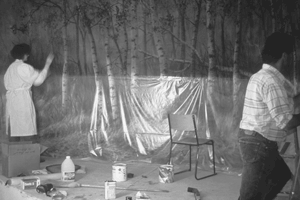
Case 3
In the early morning hours of , a fire at the Canadian Warplane Heritage Museum in Hamilton, Ontario (Figure 3), destroyed five World War II and three other historic aircraft. The loss was estimated at over $3 million. Some of the aircraft were on loan from the United States. It took 36 firefighters nearly four hours and more than 3000 L of water to put out the fire. Arson was the suspected cause. An automatic sprinkler system was not in place. A new museum was constructed and protected with an automatic sprinkler system.
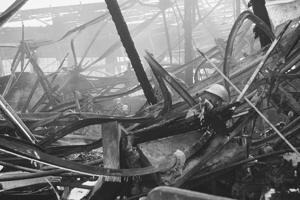
Case 4
In the late evening of , a fire at the Billings Estate Museum in Ottawa, Ontario (Figure 4), seriously damaged valuable artifacts, and placed this entire beautiful historic house and its contents at risk of destruction. Ottawa firefighters responded within minutes of the call received shortly after 11 p.m. Fire damaged many pre- books, photographs, prints, ceramic pieces, display cases, and furniture pieces held in the Second Generation Room. Damage was estimated at more than $100,000. Arson was the cause of ignition.
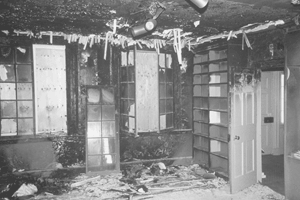
An automatic sprinkler system was not in place at the time of the fire. A sprinkler system was installed afterwards.
Millions of dollars, and irreplaceable collections could have been spared if adequate fire protection had been in place. Such losses clearly indicate a need to provide better fire protection in our museums. Data obtained from the Office of the Fire Commissioner (Figures 5 and 6) substantiate this. Dollar losses shown in Figure 6 do not include collection losses, restoration costs, or operational losses, nor are dollars adjusted to any base year.

Figure 5. Number of museum, art gallery, and library fires.
- 29 fires in
- 15 fires in
- 27 fires in
- 31 fires in
- 28 fires in
- 21 fires in
- 19 fires in
- 25 fires in
- 44 fires in
- 23 fires in
- 30 fires in
- 23 fires in
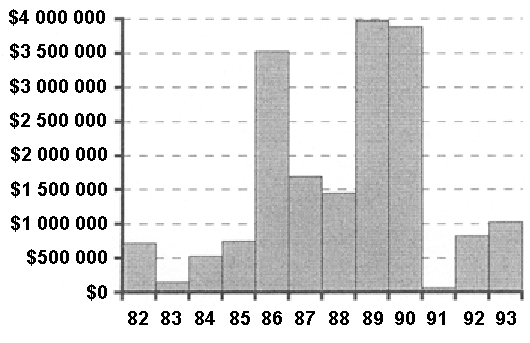
Figure 6. Museum, art gallery, and library fire dollar losses.
- $700,000 in losses in
- $200,000 in losses in
- $500,000 in losses in
- $700,00 in losses in
- $3,500,000 in losses in
- $1,700,000 in losses in
- $1,400,000 in losses in
- $3,975,000 in losses in
- $3,900,000 in losses in
- $50,000 in losses in
- $800,000 in losses in
- $1,000,000 in losses in
Causes
Numerous museum fires have been the result of arson in past years. Arson-related fires are still a major cause of museum fires. The British Fire Protection Association (FPA) estimated 63% of fires in American and British museums and libraries involving losses of £50,000-plus between and were the result of arson. This is about twice the Canadian rate. Some arson-related fires were started to cover up thefts, others were set in adjoining occupancies, and some were unfortunately aimed specifically at the museum. Other known causes are electrical appliances such as heaters, irons, and lighting fixtures that were installed too close to combustible material, open flames, for example from welding and soldering, and construction processes.
Factors
Museum fire losses are directly or indirectly associated with museum activities taking place, with certain periods of the day, with the level of fire protection in place, and with the type of building construction materials. Museums are most vulnerable to fire during construction, renovation, and exhibit preparation periods. Most museum fires occur after hours when the building is unoccupied. Museums protected with an automatic sprinkler system and an automatic smoke detection system, both monitored on a full-time basis, experience little loss. History shows museums can lose entire collections when fire protection is not provided, and risk extensive damage when the building is protected only by an automatic smoke detection system. Most vulnerable are museums composed of combustible framing and combustible interior finishes such as found in historic houses.
Underlying Reasons for Poor Fire Protection
Most museum administrators are unaware that fires occur in museums. Many believe fire protection systems are not required because the museum is located three to four minutes from a fire station. The proximity of the local fire station does not guarantee or provide adequate fire protection for any museum. In some instances (although unusual), firefighters can be out on another call. In , the Montreal Fire Department was fighting a multiple-alarm fire when a call was received that the Lady Meredith House was on fire. This fire totally gutted the interior of the building and damaged an irreplaceable medical ethics collection. In , this was also the case when the Eganville (Ontario) Fire Department was fighting a house fire when a call was received that the St. James Catholic Church was on fire. This beautiful historic building was completely destroyed.
Many believe most fires can be controlled with a portable fire extinguisher. This may be so, but more than 70% of museum fires occur when the museum is unoccupied. Many managers refuse to install automatic sprinklers because they fear accidental water damage. This is often exaggerated and not substantiated by facts. Fire department hose line operations cause much more damage than sprinklers. As well, fire damage is always more serious in buildings unprotected by automatic sprinkler systems.
Conclusion
There is sufficient evidence to prove that fire is a real threat to any museum, that losses are considerable even in small fires, and that museums protected with automatic sprinklers and automatic smoke detection systems are less vulnerable to collection losses. Museum managers must be made aware that museum fire data are important, and must be convinced to share this information for the benefit of the community. Museums should install adequate fire protection systems before, and not after, a fire—as happens in too many cases.
Recommended Reading
-
Baril, Paul. "Fire Prevention Programs for Museums." CCI Technical Bulletin Nº 18. Ottawa: Canadian Conservation Institute, .
-
Canadian Conservation Institute. "Automatic Sprinkler Systems for Museums." CCI Notes Nº 2/8. Ottawa: Canadian Conservation Institute, .
- Canadian Conservation Institute. "Fire Protection Issues for Historic Buildings." CCI Notes Nº 2/6. Ottawa: Canadian Conservation Institute, .
Written by Paul Baril
Copies are also available in French.
Texte également publié en version française.
© Minister of Public Works and Government Services,
Cat. Nº NM95-57/2-7-1998E
ISSN 0714-6221